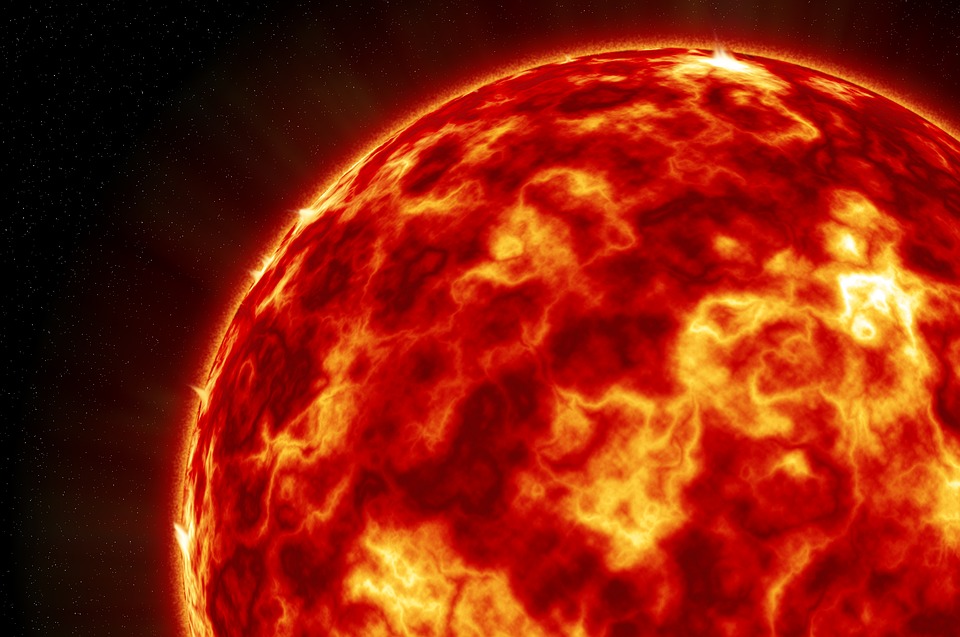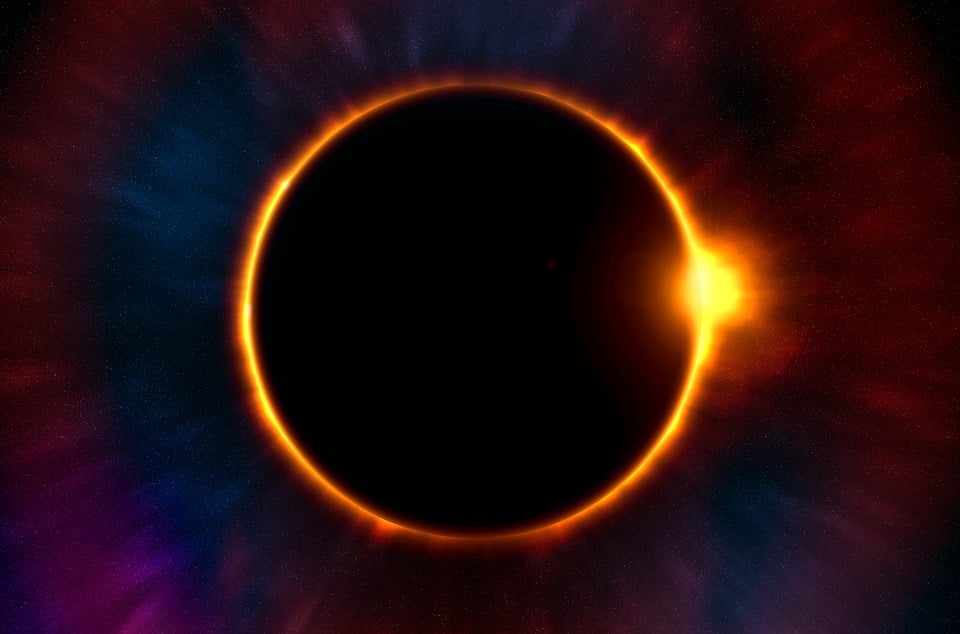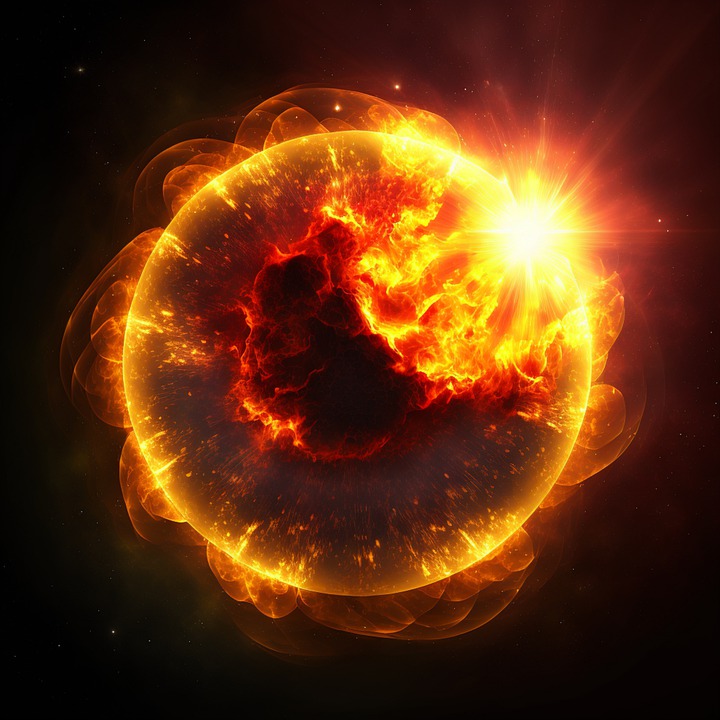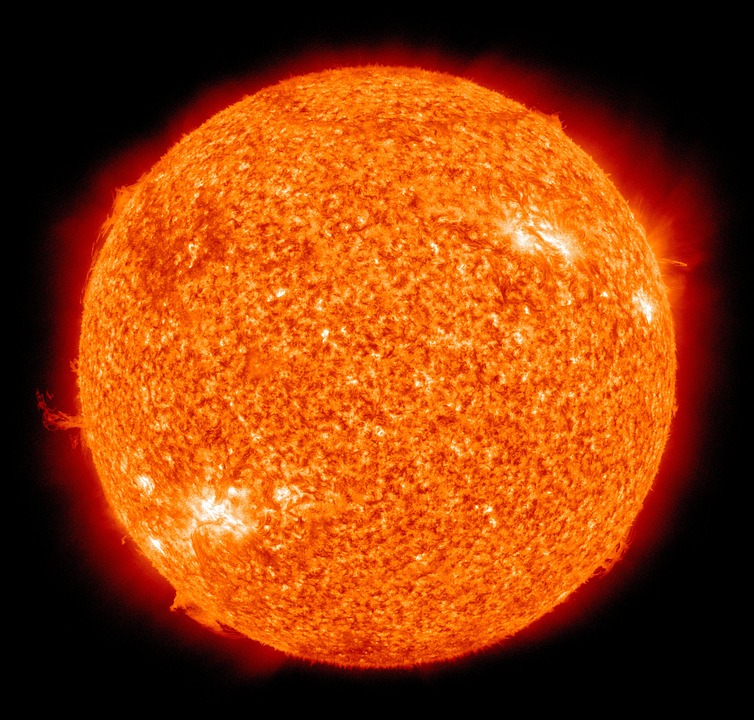The sun is a star at the center of our solar system, around which the Earth and other planets revolve. It is a nearly perfect sphere of hot plasma, with an internal convective motion that generates a magnetic field. The sun’s energy output is due to nuclear fusion, in which hydrogen atoms convert into helium. It releases vast amounts of energy in the process. The sun is by far the largest object in our solar system, with a diameter of about 1.39 million kilometers. Moreover, it accounts for more than 99% of the total mass in our solar system. The sun is also the primary source of light and heat for life on Earth.
What does the sun constitute?
The Sun is primarily the combination of hydrogen and helium. It makes up about 74.9% and 23.8% of its mass, respectively. The remaining 1.3% of its mass is the combination of heavier elements like oxygen, carbon, neon, and iron, among others. These elements are present in trace amounts but still play important roles in the Sun’s structure and behavior. The Sun’s interior comprises of several layers. The core is the hottest and densest region where nuclear fusion occurs, releasing vast amounts of energy that radiates outwards and ultimately reaches the surface.

How heat is the sun?
The Sun is extremely hot, with a surface temperature of around 5,500 degrees Celsius (9,932 degrees Fahrenheit). However, the temperature in the Sun’s core, where nuclear fusion takes place, is much hotter, estimated to be around 15 million degrees Celsius (27 million degrees Fahrenheit). The intense heat and pressure in the core cause hydrogen atoms to fuse into helium, releasing enormous amounts of energy in the form of light and heat.
The Sun’s outer atmosphere, called the corona, is even hotter than its surface, with temperatures reaching millions of degrees Celsius. The exact reason for the corona’s extreme heat is still not fully understood. However, it is thought to be related to magnetic fields and plasma dynamics. The Sun’s heat and light are essential for life on Earth. Furthermore, providing energy for photosynthesis and warmth for our planet’s climate.
Does the sun vanish?
The Sun does not simply vanish. It is a stable and self-sustaining object that has been shining for billions of years and is expected to continue doing so for billions more. However, there are times when the Sun appears to disappear or become temporarily obscured from our view due to various natural phenomena.
For example, during a solar eclipse, the Moon passes between the Earth and the Sun. Consequently, blocks out the Sun’s light and creates a temporary shadow on the Earth’s surface. This can make it appear as if the Sun has vanished or disappeared. Although it is still there behind the Moon.
Additionally, there are occasional sunspots or solar flares that can cause a temporary reduction in the Sun’s visible brightness. However, they are not significant enough to make the Sun disappear completely.

The disappearance of the sun
If the Sun were to suddenly disappear, the effects on the solar system and life on Earth would be catastrophic. The Sun’s gravity holds the planets in orbit. So if the Sun were to disappear, the planets would continue to move in a straight line at a constant speed in the direction they were traveling at that moment. This would cause the planets to fly off into space, away from the former location of the Sun.
The immediate effect on Earth would be a complete loss of heat and light from the Sun. Without the Sun’s warmth, the Earth’s surface temperature would rapidly drop. The planet would become a frozen and lifeless world within a matter of days or weeks. The loss of sunlight would also lead to a breakdown of the food chain. In addition, the plants and other photosynthetic organisms would no longer be able to produce energy through photosynthesis.
In short, the absence of the Sun would mean the end of life on Earth and the entire solar system.
The sun at present
The Sun is currently in a relatively calm phase of its 11-year solar cycle, known as the solar minimum. During this phase, the Sun has fewer sunspots and solar flares, which are the result of intense magnetic activity on its surface.
Despite the relative calmness, the Sun is still very active and continues to generate energy through nuclear fusion in its core, emitting light and heat that is essential for life on Earth. Scientists continue to study the Sun and its behavior, using a variety of instruments and telescopes to observe its surface, atmosphere, and magnetic fields. Accordingly, helps to better understand its impact on our planet and the solar system as a whole.
Heat generation
If the Sun were to generate more heat than it currently does, it would have a profound impact on the entire solar system. Moreover, life on Earth would be dramatically affected.
As the Sun generates heat through nuclear fusion, an increase in its energy output would cause it to become brighter and hotter. This would lead to a rise in temperature on Earth and throughout the solar system. The increased heat could cause the polar ice caps to melt. Accordingly, leads to a rise in sea levels and the flooding of coastal areas. It could also cause extreme weather events such as more frequent and severe storms, droughts, and heat waves.
In addition to the direct effects on Earth’s climate, an increase in the Sun’s heat output could also disrupt the delicate balance of the solar system. It could alter the orbits and trajectories of planets and other objects. Potentially leading to collisions or ejections from the solar system altogether.
However, it’s important to note that the Sun’s energy output is regulated by its internal processes. Any significant increase in its heat generation is not expected to occur in the foreseeable future.

How the sun should be?
The Sun is a stable and self-regulating star that has been shining for billions of years. Its current properties, including its size, mass, and temperature, are the result of a delicate balance between the inward force of gravity and the outward pressure of radiation and gas flow.
For the Sun to remain stable, it needs to maintain this balance. Its size and mass determine the amount of gravity that it exerts. While its temperature and composition affect the amount of radiation and gas flow.
The Sun’s size and mass are considered to be within the optimal range for a stable and long-lived star. Its temperature and composition are also suitable for sustaining the nuclear fusion reactions that power it.
In short, the Sun is currently in a stable and sustainable state. As long as it maintains this balance, it will continue to provide heat and light to sustain life on Earth for billions of years to come.
Conclusion
In conclusion, the Sun is a stable and self-sustaining star that plays a crucial role in our solar system and in sustaining life on Earth. It is a massive ball of gas, primarily composed of hydrogen and helium. It generates energy through nuclear fusion in its core.
The Sun’s energy output is the delicate balance between gravity and radiation. It has been shining for billions of years. Its properties, including its size, mass, and temperature, are considered to be optimal for sustaining its stability and longevity.
While the Sun can exhibit periods of activity such as sunspots and solar flares. It is currently in a relatively calm phase of its solar cycle. Nevertheless, it continues to generate heat and which is essential for life on Earth and supports all living organisms through photosynthesis and other biological processes.
Overall, the Sun is a fascinating and essential object in our universe. Scientists continue to study it to better understand its behavior and its impact on our solar system and beyond.
Vibrant Vaishnavi
